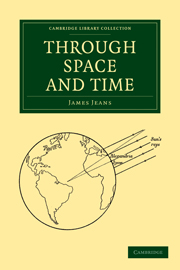Summary
The moon and planets look very conspicuous objects in the sky, but we know that these are very near neighbours which only look bright and big because they are near. For the rest our unaided eyes can see nothing of the universe except stars.
A small telescope or field-glass will shew us more stars in abundance, but it will shew us something else as well. A new class of object comes within our ken, the fuzzy indefinite patches of faint light which we describe as “nebulae”.
The word “nebula” is of course the Latin word for a mist or cloud. In the early days of astronomy it was used indiscriminately to describe any object of misty or fuzzy appearance—any object, indeed, which did not exhibit a clear outline. Since then it has been found that the nebulae fall into three distinct classes.
The first consists of objects known as planetary nebulae, which lie entirely within our system of stars. It is now known that these are themselves stars which, for reasons not altogether understood, have become surrounded by very extensive atmospheres. Examples are shewn in fig. 98 (facing p. 204). We described the red giant stars as large, but when their atmospheres are counted in, these stars are beyond all comparison larger. Our rocket, travelling at 5000 miles an hour, would take 9 years to travel through the biggest of red giants, but about 90,000 years to travel through one of these planetary nebulae.
Information
- Type
- Chapter
- Information
- Through Space and Time , pp. 203 - 218Publisher: Cambridge University PressPrint publication year: 2009First published in: 1934
